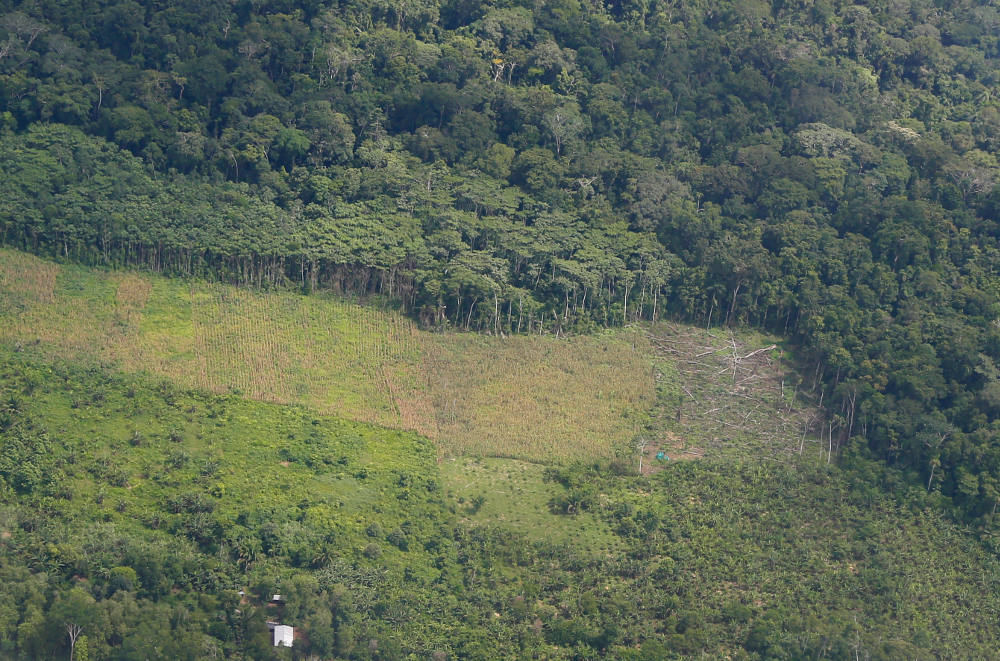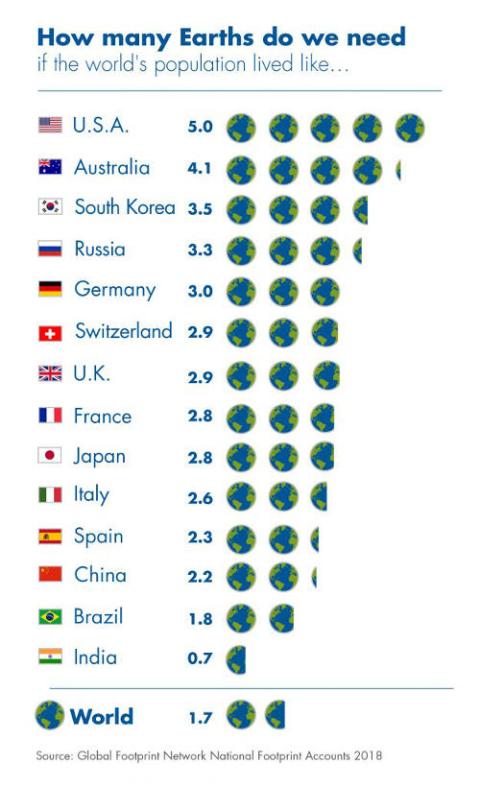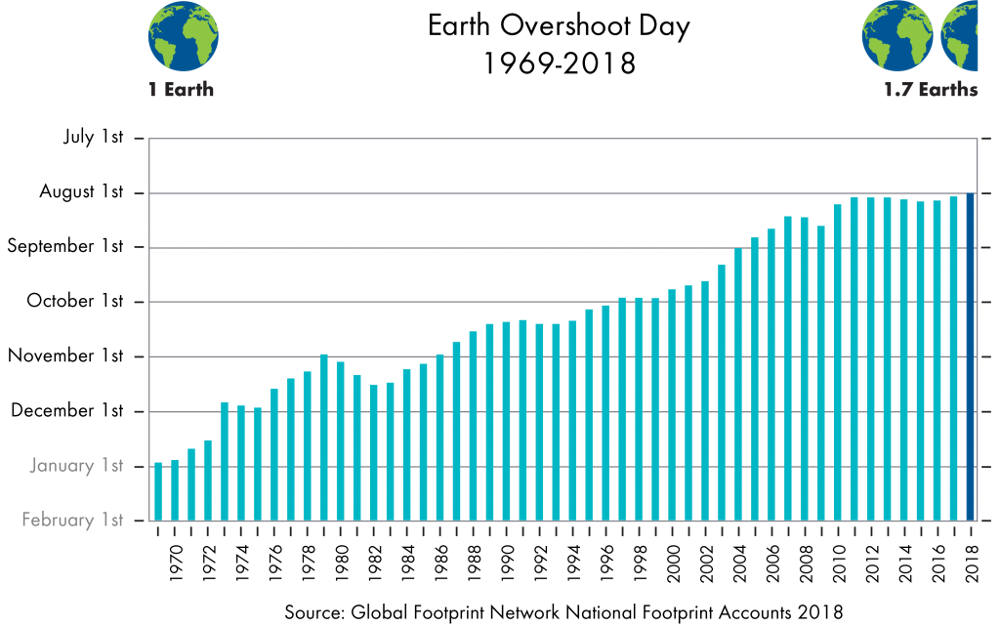
A deforested area is seen in this aerial view of Puerto Maldonado, Peru, Jan. 19. (CNS photo/Paul Haring)
You may have missed it but Wednesday, the first day of August, marked Earth Overshoot Day for 2018.
What exactly is Earth Overshoot Day? It is the day in any given year that the human community has used more from nature than Earth can renew in the entire year, as calculated by the Global Footprint Network.
We need to let that sink in.
In the first seven months of this year, the human community has consumed as much as Earth will be able to replenish in the next full year — resources such as water, food and clean air. For the next five months, we will be consuming from the reserves built up by Earth over millennia.

At the current rate of consumption, the human community will consume in 2018 the equivalent of the annual production of 1.7 Earths. We have been overfishing, overusing water supplies, overharvesting forests and emitting more carbon dioxide into the atmosphere than our ecosystems can absorb.
The current consumption figure of 1.7 Earths is based on global average consumption. It is kept down by the hundreds of millions who lack adequate food, shelter and other necessities of life. If the whole human family lived an average U.S. lifestyle, the consumption would require the equivalent of the production of all the year’s renewables from five Earths.
Or it would take five years to replenish what we consumed in one year.
Under such a scenario, Earth Overshoot Day would then fall sometime in mid-March.
Even on the face of it, this is an obviously unsustainable pattern of consumption on this rich but limited planet. But that’s not the whole of it — or even the worst of it.
When the first attempt to measure global human consumption against the Earth’s regenerative capacities was recorded in 1970, Earth Overshoot Day fell on Dec. 29. Ten years later, it had moved up to Nov. 3. By 2000, it had reached Sept. 23; by 2010, Aug. 8; and now Aug. 1 this year. The pace of human consumption is accelerating rapidly.

How long can Earth’s reserves hold out under this escalating onslaught of overconsumption?
We are already starting to see signs of its limits. The city of Cape Town, South Africa, neared running out of water earlier this year, though officials estimate usage restrictions have averted a "Day Zero" scenario, where water taps are turned off, for 2018 and 2019. But should Day Zero eventually arrive, then what?
Tensions over access to water are credited for the war that broke out a few years ago in South Sudan. Even in Adrian, Michigan, where I live, just two months of low rainfall recently forced a shift from the city’s normal water supply to local wells. How long can they hold up?
Some years back a fellow Jesuit from Eastern Europe told me that the water rights to the largest body of fresh water in his country had been bought up by Israel. Nations are already taking steps to secure water sources in preparation for future serious shortages. If or when that happens, growing migration flows and conflicts are sure to follow.
Advertisement
What we are seeing in the movement of Earth Overshoot Day over the last 30 years looks dangerously like a death spiral. But it is one we can still reverse.
The website Overshootday.org lays out a menu of responses. Many of the actions recommended will be familiar to anyone concerned about climate change and reducing humanity’s carbon footprint, since that footprint is an important contributor to the Overshoot factors. The #MOVETHEDATE campaign is an effort to build a social movement to move the overshoot date back five days a year. That would bring the human community back to sustainable levels of consumption by about 2050.
There is a serious challenge hidden in that goal, though, as obviously necessary as it appears to be.
When politicians herald economic growth of 3 percent or 4 percent or more as the path to prosperity and poverty alleviation, they are talking about increasing production and consumption patterns that are already way beyond Earth’s capacity to sustain. The type of economic growth that we currently produce — consumption driven, fossil-fuel based, globally competitive — is steadily overusing resources, warming the planet and contributing to climate change, all of which are further impoverishing the already poor. It is accelerating the death spiral illustrated by the Earth Overshoot calculations and threatening life as we know it on Earth over the next century.
We must end poverty, but over the long term that can only happen through redistribution and a reduction of resource overuse globally. We must find creative new sustainable patterns of development.
Let’s take a step toward achieving that today by spreading the word about Earth Overshoot Day, joining the movement to #MOVETHEDATE, and becoming part of the healing of Earth, our common home.
[Jesuit Fr. James E. Hug serves as sacramental minister for the Adrian Dominican Sisters and writes on spirituality for social transformation. His blog, "Truth that does Justice," can be found on the website for the Dominican Center: Spirituality for Mission.]







